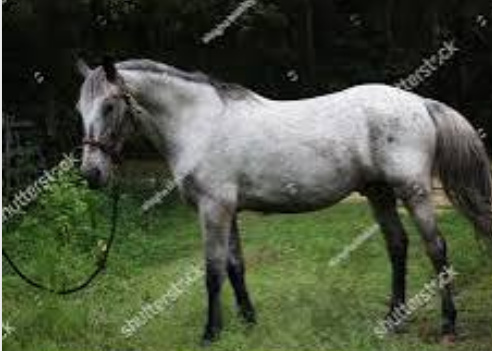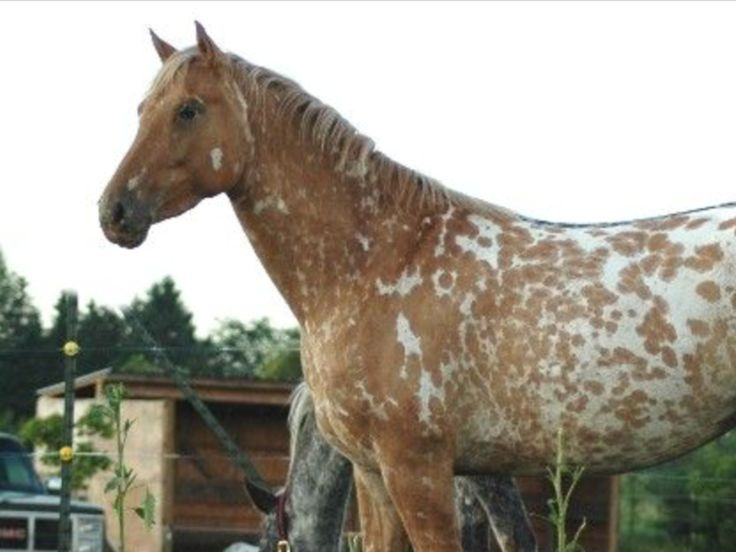My first horse was a varnished Appaloosa mare and we successfully jumped 4 ft courses. She looked after my DH when we did trail riding and was used in an international para-dressage competition hosted by PRDA . A lovely woman from New York, New York rode her and won her division. Had 2 Americans try to buy her. My 8th horse is a 10 month old black leopard (BB, LP/N,PATN/PATN) foundation Appaloosa colt. He has good movement and should have a uphill build. Both parents did and his 3 day and 3 month appearance indicate he will not be downhill.
Appaloosa varnish is a progressive silvering effect that leaves colour (called varnish marks) on the bony prominence of the face, lower neck, forearm, knees, hips and stifle. My mare was a blue roan. Her dark points stayed blackish while the rest of her body turned slowly white/gray. Every season brought out a new colour coat with the dark points staying the same.





